Womanhood VS Motherhood: the Enigma of Voluntary Childlessness
Avni Gupta discusses the enigma of voluntary childlessness. Married women who bear no children yet are often bombarded with questions like “When are you planning to have a child?”, “Don’t you think it’s time to have one?”, “Have you consulted a doctor?”, and “Why would you not want children?”
For India’s burgeoning middle class, pronatalism prevails to be the dominant and one of the most crucial ideologies. Although society tolerates some amount of delay, women are expected to marry and ultimately reproduce. It is natural for a woman to want to bear a child in the country. Mind you, not “natural to bear a child”; rather, “natural to want to bear one.”
In the early 20th century, India saw high birth rates, baby boom, with an average of around six children being born to each woman. The early 1970s experienced a fair decline in fertility rates, which eventually increased even further with time [12]. Gradually, women have gained more independence from their male counterparts and their choices are the result of the newfound freedom. Revolutionary movements like women’s suffrage, family planning, abortion rights, and improvements in contraception have paved the way for women to bring about a transition in female roles.
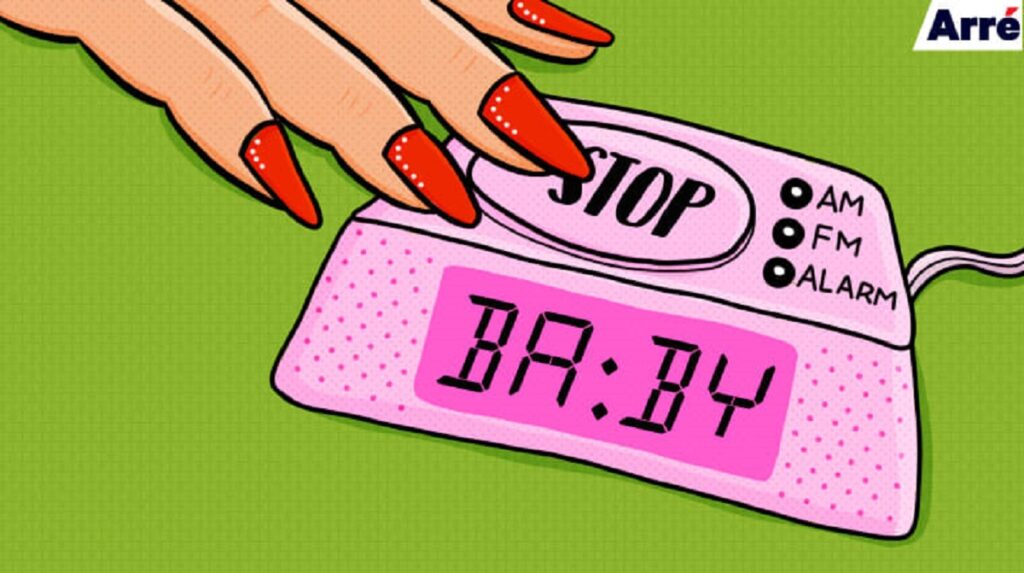
Childlessness: Voluntarily & Involuntarily
Childlessness refers to those people who do not have children for various personal, biological, or conditional circumstances. Biological impediment to fecundity causes involuntary childlessness amongst partners. Voluntarily childless women are those who are fertile or fertile but bear no intentions of having children or have chosen the path of sterilization [7, 8, 11]. This type of childlessness is an active choice and commitment to lead a life with the decision to not be a parent. Such persons are identified by numerous terms such as intentionally childless, childless by choice, un-child-ed, non-mother, non-father, without a child, and childfree [15]. Voluntary childlessness offers an opportunity to transgress the cultural image, according to which, womanhood equates to motherhood [15].
Voluntary childlessness lies on a large spectrum [6, 8].
- Early deciders. People who know from a very early age that they bear no desire to reproduce.
- Transitional or Postponers. Those who did not necessarily start out their marriages with the intention, but deferred eventually. They delayed the decision past the age of fertility or became aware in the process that they do not wish to have children.
- Accept childlessness. Those who are in their forties and anticipated to bear children in the past, but accept the decision now.
- Those who have never taken a decision or addressed the situation.
- Decision taken away. Those who feel that the decision to not bear children was taken away from them due to problems during conceiving or life experiences.
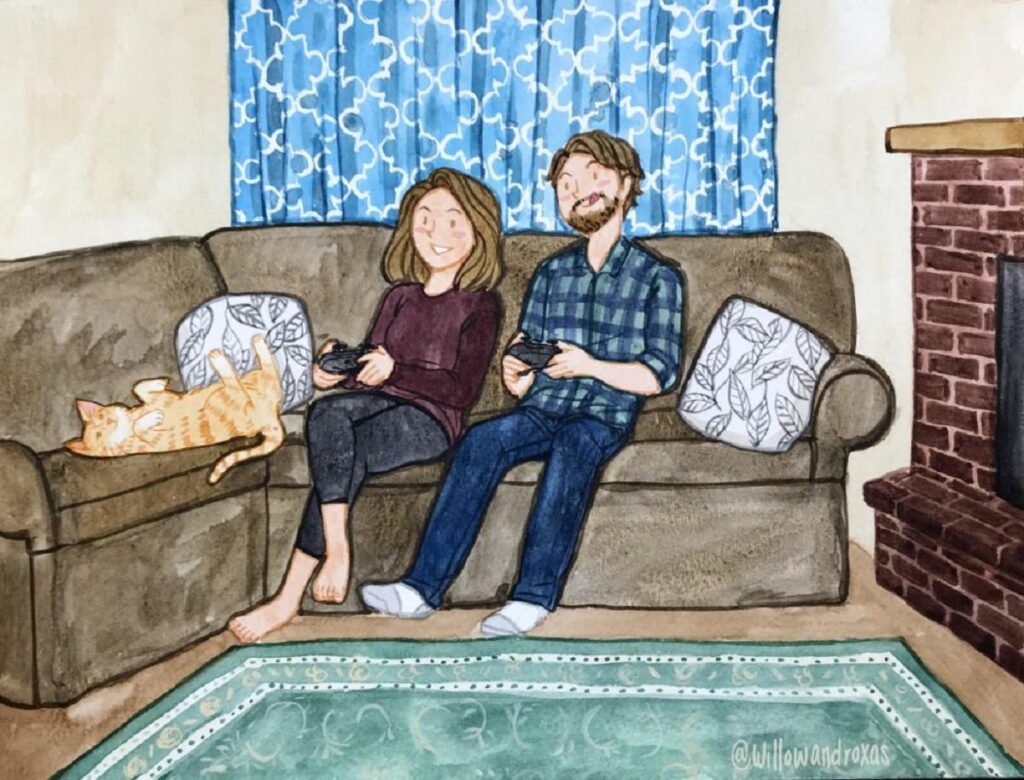
Rates of childlessness vary tremendously amongst nations, with developed countries facing much more cases than developing countries. Researchers argue that there is a U-shaped relationship between childlessness and the development level of countries [11]. Childlessness amongst developing countries is predominantly involuntary, while childlessness in developed countries is mainly voluntary. In industrial countries, the concept of “coercive pronatalism” is emerging [15]. It involves promoting family limitation amongst poorer strata, while discouraging wealthy women from being childless.
Where does India stand?
In developing countries like India, the idea of voluntary childlessness is barely explored or talked about. On an average, the percentage of childless women is 1.4 percent higher than primary infertility, depicting the negligible voluntary childlessness in the country [17]. A survey revealed 7% of married women to be childless in India, with highest occurrences from southern states – Andhra Pradesh, Goa, Kerala, Maharashtra, and Tamil Nadu [1]. This however constitutes both, voluntarily and involuntarily childless women. Reismann encountered 3 out of 31 women in south India to be childless by choice. Involuntary childless women are almost non-existent in our nation as the idea is considered as “undesirable” [12].
In India, it is believed that a child solidifies a lady’s fragile bond with her spouse in an arranged marriage and improves her status in the joint family & larger community. With a child, she can eventually become a mother-in-law – a position of considerable power and influence in Indian families [14]. Despite the belief, communities of childless people are mushrooming over online platforms. Discussion groups like Child-free by Choice in India, Child-free Indians, and Reluctant Procreators, provide a social measure for like-minded people to interact [3]. This indicates the emerging trend of childlessness in Indian cities. Although a challenging process, childless women make efforts to strengthen themselves against stigma. Resistance and actions against stigma are on the rise – women choose to talk back to discriminatory behaviour. Women directly confront pronatalist attitudes and hostile circumstances, which often involves talking back to in-laws or husbands [14].
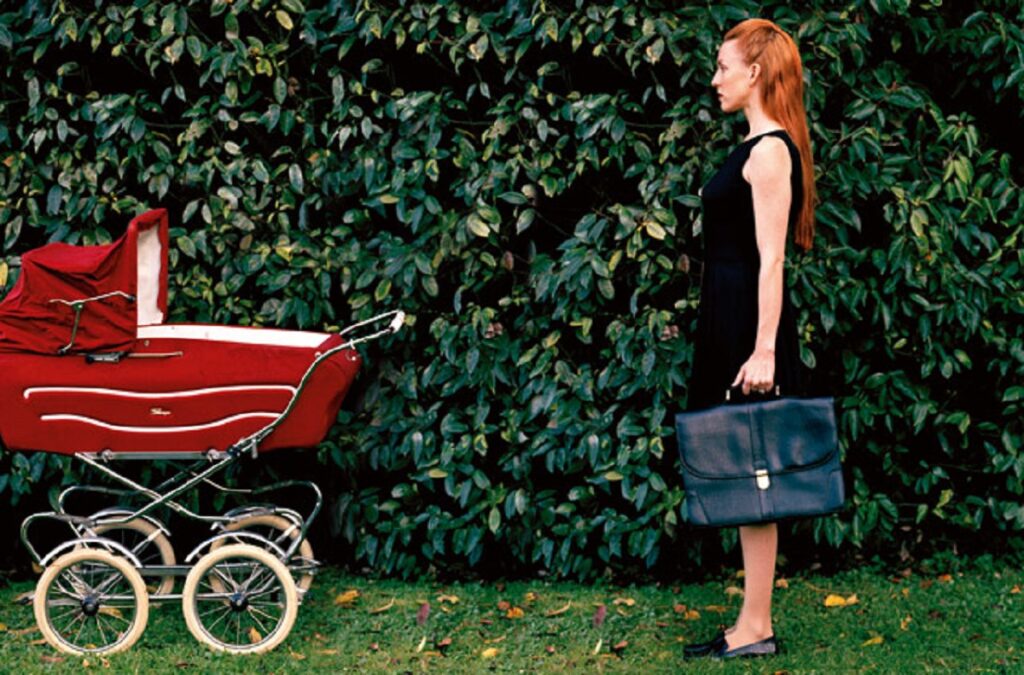
Why Choose to be Childless?
Numerous variables are known to play a role in structuring the decision to remain childless. Demography, family size, urban/rural living situation, religious views, education level, employment status, and commitment to one’s career are a few of the many factors that may incline one towards a childless life [15]. Personal, past experiences also help shape one’s decision [3].
Psychological and sociological circumstances are known to motivate individuals to remain childless by choice. Although all childless couples must not be restricted to certain coherent values, freedom acts as a crucial driver that inclines a large number of people. Freedom from childcare responsibilities, the opportunity for self-fulfillment, spontaneous mobility, more satisfactory marital relationship, career preferences, monetary advantages, concerns about population growth, and concerns for childbirth and recovery are few reasons [15]. Freedom to follow one’s own pursuits – travel and explore is so strong, that they do not wish to lose their independence [3].
Views on Children
People have stated that ‘children never stop being responsible for themselves [9]. Some couples have also claimed that having children for oneself is a selfish act, as you want someone to take care of you in old age. Others lack maternal/paternal instincts and fulfill their urge to nurture by caring for pets, neighbors, family members, and friends. Few others even choose to question the sanctity of motherhood by shedding the light on the underlying facets – problems and sacrifices of motherhood. Rest are unwilling or not ready to bear a lifetime of commitment and find difficulty balancing work and home life [3].
Research results state that some couples who have chosen to have no children claim no differences in the degree of life satisfaction with or without a child, while other couples exhibit more contentment in a childless lifestyle. Some elderly who have remained childless throughout their lives have expressed less stress. Marital satisfaction was found to be much higher in couples without children in most cases [15].
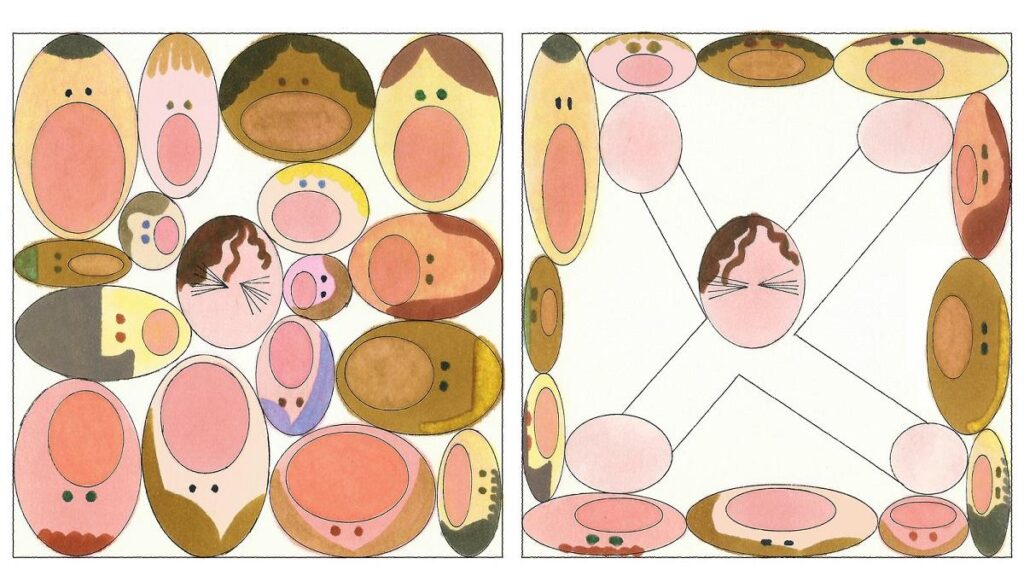
Stigma: Condemn the Childless
Although invisible in social research, childless by choice women maintain high visibility amongst their families and communities. Research strongly reveals disapproval from society towards childless women and grave consequences [1, 4]. The drive for legacy succumbs the society and promotes a desire to leave something of oneself for the future. [5]. Thereby, childless couples express a sense of isolation from friends, family, neighbors, and acquaintances. Childless women, especially, believe that they are viewed negatively on various levels – selfish, abnormal, immature, self-indulgent, materialistic, unfortunate, unnatural, unhappily married, undesirable, individualistic, irresponsible, maladjusted, child-haters [7, 13, 15, 16].
Non-mothers are reduced to crippling stereotypes as some claim that voluntarily childless women are more masculine (or unfeminine) and cold-hearted. In some cases, women without children are even viewed as evil, deviant, and neurotic [2]. Often on television or in classic tales, childless women are portrayed in a negative light and majorly anti-family [15]. The stigmatization of childlessness by choice is intertwined with the construction of womanhood as motherhood.
In fact, infertile women are known to be viewed much more positively than those who are childless by choice. The former is pitied and sympathized with [4].
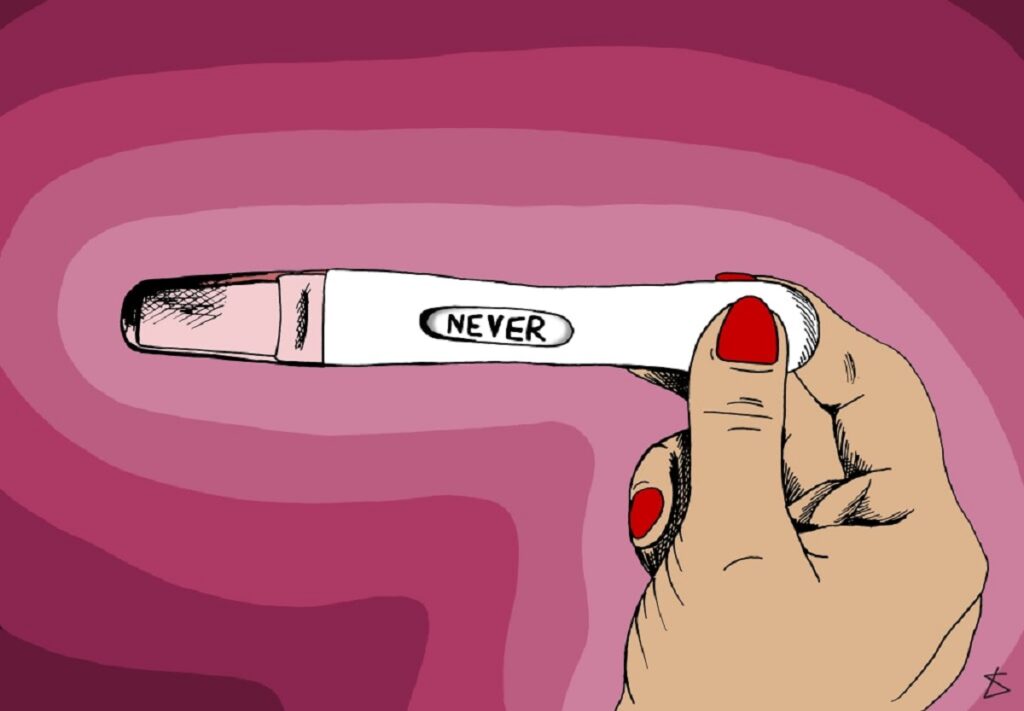
Recently, the word “infertility” has emerged as a catch-phrase, and reproductive techniques aid in the manipulation of women’s bodies. In a world where motherhood is a milestone and involuntary childlessness is a stigma, voluntarily choosing childless life by a woman, the “creator of life”, is undoubtedly a “social crime.”
References:
- Agrawal, P., Agrawal, S., & Unisa, S. (2012). Spatial, socio-economic and demographic variation of childlessness in India: A special reference to reproductive health and marital breakdown. Global journal of medicine and public health, 1(6), 1-15.
- Basten, S. (2009). Voluntary childlessness and being childfree. The future of human reproduction: Working paper, 5, 1-23.
- Chandni Bhambhani & Anand Inbanathan (2018) Not a mother, yet a woman: Exploring experiences of women opting out of motherhood in India, Asian Journal of Women’s Studies, 24:2, 159-182.
- Chancey, L., & Dumais, S. A. (2009). Voluntary childlessness in marriage and family textbooks, 1950—2000. Journal of family history, 34(2), 206-223.
- Doornenbal, S. The influence of childlessness of female empowerment.
- Gore, D. L. I Don’t Want Any Children… Ever: Gender Differences in Voluntary Childlessness in the US, 2002, Florida State University (Doctoral dissertation, PhD thesis).
- Kelly, M. (2009). Women’s voluntary childlessness: a radical rejection of motherhood?. Women’s Studies Quarterly, 37(3/4), 157-172.
- Manning-Kelly, S. M. (2007). The experience of voluntarily childless women in contemporary New England.
- McAllister, F., & Clarke, L. (2000). Voluntary childlessness: Trends and implications. Infertility in the modern world. Present and future prospects, 189-237.
- Mukherjee, M., & Nadimipally, S. B. (2006). Assisted reproductive technologies in India. Development, 49(4), 128-134.
- Poston Jr, D. L., & Trent, K. (1982). International variability in childlessness: A descriptive and analytical study. Journal of Family Issues, 3(4), 473-491.
- Ram, B. (2012). Fertility decline and family change in India: a demographic perspective. Journal of Comparative Family Studies, 43(1), 11-40.
- Reining, K. Voluntary Childlessness: Stigma and Societal Pressures on Men and Women.
- Riessman, C. K. (2000). Stigma and everyday resistance practices: Childless women in South India. Gender & Society, 14(1), 111-135.
- Shapiro, G. (2014). Voluntary childlessness: A critical review of the literature. Studies in the Maternal, 6(1).
- Smith, H. (2018). Feisty and childfree: voluntary childlessness as an alternative to mothering. Dangerous Ideas about Mothers, 137-147.
- Unisa, S. (2010). Infertility and treatment seeking in India: findings from district level household survey. Social Aspects of Accessible Infertility Care in Developing Countries, 59-65.
Author

